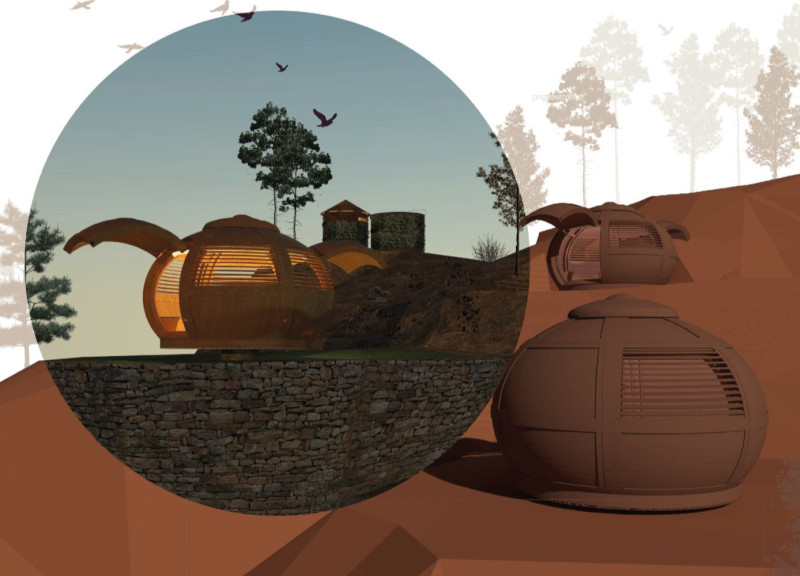5 key facts about this project
The Cocoon is a contemporary architectural project located within a forest garden in Oleiros, Portugal. This design aims to create a space for spiritual and communal activities, focusing on well-being through its unique architectural form. The structure resembles a cocoon, promoting a sense of safety and tranquility, while fostering a deep connection with the surrounding environment.
The primary function of The Cocoon includes spaces for yoga, meditation, and social gatherings. These areas are designed to support both individual and communal experiences, facilitating a holistic approach to wellness. The organically curved structure encourages natural ventilation and maximizes the use of daylight, offering a comfortable internal environment that adapts to the needs of its users.
Sustainable Materiality and Eco-conscious Practices
The Cocoon distinguishes itself through its commitment to sustainability and the use of local materials. The primary structural component is wood, chosen for its thermal properties and aesthetic value. The interior features natural elements such as Portuguese cotton for furnishings and compostable materials in waste management, emphasizing minimal environmental impact. Additional elements include solar panels for energy generation and natural insulation materials, reinforcing the project’s ecological focus.
Unique Design Elements and User Experience
The architectural form of The Cocoon is characterized by its curvilinear shape, which not only enhances aesthetic appeal but also facilitates natural airflow throughout the interior. A central oculus integrates natural light and provides a connection to the outdoors, enhancing the sensory experience within the space. Modular construction allows for adaptability and scalability, making the design easily replicable across various environments.
The interior layout promotes functionality, with adjustable lighting systems that cater to different uses, from yoga sessions to community gatherings. The integration of acoustical features captures and amplifies natural sounds, creating a serene atmosphere conducive to relaxation and mindfulness. This emphasis on user experience sets The Cocoon apart from typical architectural designs, as it prioritizes wellness and community interaction.
For a deeper understanding of The Cocoon project, including architectural plans, sections, and detailed design elements, readers are encouraged to explore the project presentation. By examining these aspects, enthusiasts can gain insight into the architectural ideas that inform this unique structure.






















































